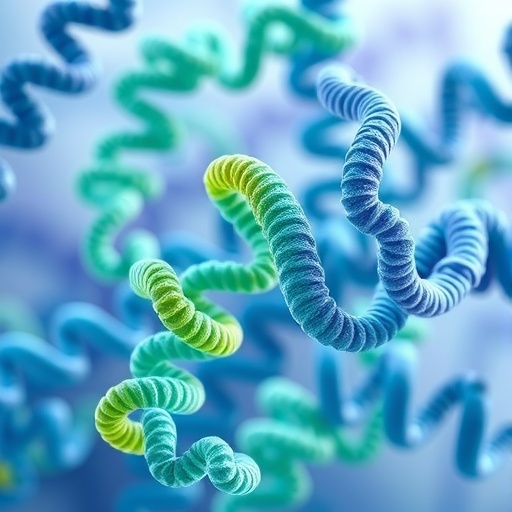Protein language models have recently begun to revolutionize the field of bioinformatics by enabling the prediction of amino acid sequences from extensive protein databases. These models uniquely learn to represent proteins as feature vectors, facilitating significant advancements across numerous applications, such as predicting the effects of mutations and understanding protein folding processes. The underlying principle that many of these advancements hinge upon is the recognition that conserved sequence motifs play a crucial role in protein fitness. However, the relationship between sequence conservation and fitness is nuanced and can often be confounded by various factors including the evolutionary history and environmental contexts of proteins.
As researchers delve deeper into the complexities of protein functions, it raises an intriguing question: should we explore alternative data sources that may provide more direct and functional insights into the roles of specific proteins? This notion is at the heart of a transformative study conducted by Duan, Skreta, Cotta, and colleagues, which investigates the use of diverse text annotations from the UniProt database as additional training inputs for protein models. In this innovative work, the authors showcase how fine-tuning protein models with a selection of these annotations significantly enhances their predictive capabilities across a variety of function prediction tasks.
The study presents a critical reexamination of existing methodologies, wherein the researchers methodically assess the predictability achieved by incorporating rich text annotations, revealing a potentially powerful avenue to boost model efficacy. Traditional protein models, despite their training on vast amounts of sequence data, often fall short in their ability to make nuanced predictions linked to specific protein functions. This limitation accentuates the necessity for an integrated approach that encompasses diverse data modalities to create models that are not only robust in prediction but also relevant to real-world applications.
In conducting their research, Duan and the team carefully selected 19 types of text annotations to train their protein models, considering various biological entities and functional aspects delineated within the UniProt database. Their findings indicate a marked improvement in the model’s performance, particularly when evaluated on various benchmark tasks within protein function prediction. This suggests that the semantic nuances captured in textual annotations can significantly complement the information gleaned from amino acid sequences alone.
Encouragingly, the study reports that their enhanced model outperformed standard local alignment search tools, an achievement that underscores the limitations of existing pretrained protein models in handling complex predictive tasks. Standard tools often rely solely on sequence identity, which may overlook the richness of contextual information embedded in textual annotations. By contrast, the work of Duan and colleagues illustrates the potential of marrying sequence data with supplemental biological information to yield meaningful predictions.
The implications of this work extend far beyond mere computational efficiency. The models developed through this research offer fresh insights that can guide experimental biologists in understanding protein functions more deeply. For instance, when researchers seek to evaluate the functional impacts of specific mutations in proteins, having access to a model that is trained on diverse functional annotations could lead to more accurate predictions regarding the biological significance of these mutations.
In essence, this study is akin to unlocking a new frontier in protein modeling by suggesting that textual information can dramatically enrich the functional understanding of proteins. As the landscapes of both computational biology and machine learning continue to evolve, integrating multi-faceted data sources will likely become imperative to drive future research and discovery.
Duan and colleagues’ findings serve as a pivotal reminder of the power inherent in interdisciplinary approaches. By bridging linguistic data with biological computation, the research opens avenues for future inquiries that might explore how other non-traditional data sources, such as literature mining or experimental results, can be harmonized into these protein models. This is especially pertinent given the exponential growth of biological knowledge repositories and the continuing emergence of sophisticated tools for data analysis.
As computational capabilities expand, the ability to assimilate and interpret vast amounts of information will be foundational in pushing the boundaries of protein modeling and understanding biological systems. Accordingly, the study emphasizes the burgeoning need for continued exploration in this domain, with researchers encouraged to consider integrating an even broader spectrum of information into their predictive models.
In summary, this innovative research by Duan, Skreta, and Cotta represents a significant leap in the quest to harness textual data for enriching protein language models. The promise of these advancements lies not only in improved predictions but also in the potential to accelerate discoveries in biomedical research and therapeutic development.
As we look toward the future, the challenges presented by understanding protein functions within living systems will necessitate a shift in strategy. A shift towards a more integrated approach that accommodates diverse datasets and explores the relationships between sequence data and contextual annotations has now emerged as a priority in the domain of computational protein research. This study paves the way for a new paradigm that emphasizes the collaborative potential of diverse data sources in the pursuit of deeper biological insights.
Subject of Research: Enhancing protein language models through text annotations from UniProt to improve functional predictions.
Article Title: Boosting the predictive power of protein representations with a corpus of text annotations.
Article References:
Duan, H., Skreta, M., Cotta, L. et al. Boosting the predictive power of protein representations with a corpus of text annotations.
Nat Mach Intell 7, 1403–1413 (2025). https://doi.org/10.1038/s42256-025-01088-6
Image Credits: AI Generated
DOI: https://doi.org/10.1038/s42256-025-01088-6
Keywords: Protein language models, sequence prediction, functional annotations, UniProt, protein fitness, machine learning, bioinformatics.
Tags: alternative data sources for proteinsamino acid sequence predictionbioinformatics advancementsconserved sequence motifsenhancing protein model predictionsevolutionary history of proteinsmutation effect predictionsprotein fitness relationshipsprotein folding processesprotein language modelstext annotations in bioinformaticsUniProt database annotations





